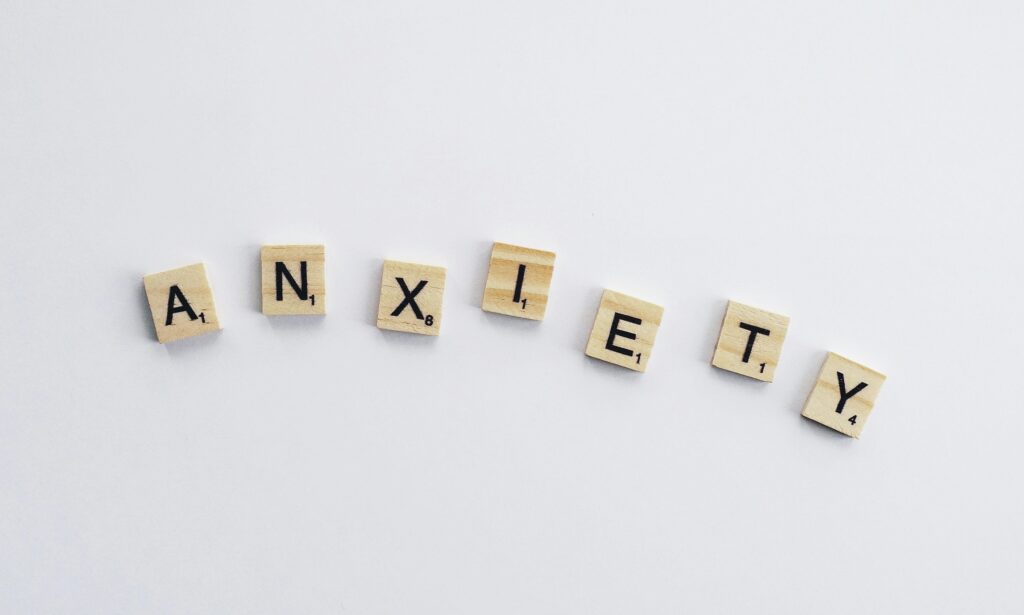You’re standing in line at the grocery store. Suddenly, your heart pounds, your chest tightens, your vision blurs. It feels like the walls are closing in, like you might die. You abandon your cart and flee to your car, shaking, terrified—and you have no idea why it happened.
If you’ve ever experienced something like this, you’re not alone. Panic attacks affect up to 1 in 3 people at some point in their lives. For those with Panic Disorder, these attacks come repeatedly and unexpectedly, creating a cycle of dread, avoidance, and disruption.
Fortunately, there’s a proven path forward: Cognitive Behavioral Therapy (CBT). CBT is the gold standard treatment for Panic Disorder, offering long-term relief by helping people understand, face, and change the thoughts and behaviors that fuel their anxiety.
In this post, we’ll explain exactly how CBT helps reduce panic attacks—step by step. We’ll cover the science, offer real-life examples, and walk through the techniques therapists use to guide patients toward freedom from fear.
What Is Panic Disorder?
Panic Disorder is characterized by recurrent, unexpected panic attacks and persistent worry about having more attacks or their consequences.
What Is a Panic Attack?
A panic attack is a sudden surge of intense fear or discomfort that peaks within minutes. Symptoms may include:
-
Rapid heartbeat
-
Shortness of breath
-
Chest pain
-
Sweating
-
Dizziness
-
Nausea
-
Fear of losing control or “going crazy”
-
Fear of dying
Though terrifying, panic attacks are not dangerous. They are false alarms—your brain’s “fight or flight” system misfiring.
How Panic Disorder Develops
After one or two panic attacks, many people begin to fear the next one. This fear leads to:
-
Avoidance (of places, activities, or sensations)
-
Hypervigilance (constantly scanning for signs of panic)
-
Safety behaviors (carrying water, avoiding being alone)
These coping strategies seem helpful, but they reinforce the belief that panic is dangerous—and keep the cycle going.
Why CBT Works for Panic Disorder
CBT is based on the idea that thoughts, feelings, and behaviors are interconnected. When you change one part of the triangle, the others follow.
For panic, CBT helps by:
-
Explaining the mechanics of panic (psychoeducation)
-
Identifying and challenging catastrophic thoughts
-
Reducing avoidance and safety behaviors
-
Using exposure to retrain the fear response
This approach is supported by decades of research. A 2020 meta-analysis in Depression and Anxiety confirmed that CBT outperforms medication and other therapies for long-term panic recovery, with up to 85% of patients showing significant improvement.
CBT for Panic Disorder: A Step-by-Step Breakdown
Let’s walk through the CBT process, step by step, using a hypothetical client named Alex.
Step 1: Psychoeducation – Demystifying Panic
CBT starts by helping clients understand what’s happening in their bodies and minds during a panic attack.
Key Concepts Covered:
-
Panic symptoms are normal physiological responses (adrenaline, not danger)
-
Panic attacks always peak and pass, usually within 10–30 minutes
-
The fear of fear is what keeps the cycle going
Alex’s Insight: “So my racing heart isn’t going to kill me. It’s my body doing what it’s designed to do—I just misread the signal.”
Knowledge is power. Just understanding panic lowers anxiety by reframing it as uncomfortable but safe.
Step 2: Cognitive Restructuring – Challenging Catastrophic Thinking
Most panic sufferers interpret bodily sensations in catastrophic ways:
-
“My chest hurts → I’m having a heart attack”
-
“I feel dizzy → I’m about to faint or die”
-
“I can’t breathe → I’m suffocating”
CBT teaches clients to catch, examine, and replace these thoughts.
The Process:
-
Identify the automatic thought: “I’m going to faint.”
-
Examine the evidence: “Have I ever actually fainted during a panic attack?”
-
Generate an alternative: “I feel dizzy, but I’m standing and breathing. This will pass.”
Alex’s Reframe: “My body is reacting, not breaking. I’ve gotten through this before.”
This reduces the perceived threat, making future panic attacks less intense.
Step 3: Interoceptive Exposure – Facing Physical Sensations
A hallmark of CBT for panic is interoceptive exposure—deliberately triggering feared bodily sensations in a controlled setting to teach the brain that they’re not dangerous.
Common Exercises:
-
Spinning in a chair (to induce dizziness)
-
Hyperventilating for 30 seconds (to feel lightheaded)
-
Running in place (to simulate a racing heart)
Alex’s Exercise: Spinning to provoke dizziness. At first, the fear surges. But by staying with the sensation, Alex sees it pass without catastrophe.
Over time, repeated exposures desensitize the brain’s fear response.
Step 4: In Vivo Exposure – Reentering Feared Situations
Many people with panic disorder avoid situations they associate with previous attacks—driving, public spaces, elevators, or even exercise.
CBT guides clients to face these real-world triggers, gradually and repeatedly.
Creating an Exposure Hierarchy:
Alex creates a list from least to most anxiety-provoking:
-
Standing in a grocery line for 2 minutes
-
Taking a short elevator ride
-
Driving on the freeway alone
Each step is practiced repeatedly until anxiety decreases. Avoidance is replaced with confidence.
Step 5: Reducing Safety Behaviors
Safety behaviors (e.g., carrying water, always sitting near an exit) seem harmless—but they send a message: “I can’t handle this without help.”
CBT gently encourages clients to drop safety crutches, reinforcing trust in their own ability to cope.
Alex’s Safety Behavior: Carrying anxiety medication “just in case.” With the therapist’s help, Alex practices leaving it behind—and proves he can still get through panic.
Step 6: Relapse Prevention – Staying Well Long-Term
CBT concludes with tools for maintaining progress and handling setbacks:
-
Reviewing CBT skills
-
Planning for high-stress situations
-
Normalizing occasional symptoms without panic
Alex learns: “A fast heartbeat doesn’t mean I’m back at square one. It’s just a sensation—not a threat.”
This mindset prevents the panic cycle from restarting.
Case Study: CBT Success Story
Client: Priya, 32, experienced daily panic attacks, often while commuting.
Symptoms: Racing heart, nausea, trembling, fear of passing out on the subway.
Avoidance: Stopped using public transportation; avoided crowded places.
CBT Plan:
-
Psychoeducation: Learned the body’s fight-or-flight system.
-
Cognitive Work: Reframed thoughts like “I’ll collapse on the train” to “Even if I feel uncomfortable, I’ve never collapsed before.”
-
Interoceptive Exposure: Practiced hyperventilating and spinning to simulate symptoms.
-
In Vivo Exposure: Began riding one stop, then two, then full commutes.
Outcome:
After 12 sessions, Priya returned to commuting without panic. She still noticed symptoms occasionally—but no longer feared them.
What the Research Shows
-
A 2021 Journal of Anxiety Disorders study found CBT had a 74% remission rate for Panic Disorder after just 10 sessions.
-
A Cochrane Review of 33 trials concluded that CBT is the most effective non-drug treatment for Panic Disorder.
-
Brain imaging studies show CBT changes activity in the amygdala and prefrontal cortex—regions involved in fear and emotional regulation.
CBT vs. Medication for Panic
Medication (like SSRIs or benzodiazepines) can reduce panic symptoms—but they don’t address the underlying fear structure. CBT helps patients:
-
Understand what fuels their panic
-
Rewire the brain’s response
-
Gain lasting skills, not temporary relief
Combination treatment (CBT + meds) may be helpful for some—but many achieve full recovery with CBT alone.
CBT for Panic via Telehealth
CBT adapts well to telehealth, especially for clients who fear leaving home.
Tele-CBT Benefits:
-
Comfort of being in your own space
-
Access to specialists regardless of location
-
Tools like video exposures and online thought records
A 2022 Telemedicine Journal study showed no difference in outcomes between in-person and remote CBT for Panic Disorder.
CBT for Teens and Older Adults with Panic
Teens:
CBT is highly effective for adolescents with panic attacks. Sessions use:
-
Age-appropriate language
-
Family involvement
-
Exposure games
Early intervention prevents years of avoidance and anxiety.
Older Adults:
CBT is adapted to include:
-
Slower pacing
-
Addressing health fears
-
Mindfulness for bodily sensations
Studies show similar success rates across age groups.
Practical CBT Techniques for Panic Relief
Even if you’re not in therapy, you can begin practicing CBT principles.
1. Keep a Panic Diary
Track:
-
What triggered the panic
-
What you felt/thought
-
What you did
-
What happened
This builds awareness and de-catastrophizes the experience.
2. Practice “Floating” Through Panic
Instead of fighting panic, float through it:
-
“This is temporary.”
-
“I’ve felt this before and survived.”
-
“It will pass on its own.”
Resistance fuels anxiety. Acceptance deflates it.
3. Drop Safety Behaviors
Try letting go of “crutches” for short periods. Each success builds trust in your own strength.
4. Do Intentional Symptom Exposure
Set a timer and spin in a chair, run in place, or hold your breath. Remind yourself: These sensations are safe.
5. Use Thought-Challenging Prompts
Ask:
-
“What’s the worst that could happen?”
-
“How likely is that?”
-
“Even if it happened, could I cope?”
Often, the feared outcome is both unlikely and survivable.
Actionable Takeaways
-
Learn about panic: Knowledge reduces fear.
-
Catch your thoughts: Notice and reframe catastrophic predictions.
-
Face the fear: Use exposure to teach your brain you’re safe.
-
Drop the crutches: Let go of safety behaviors that reinforce anxiety.
-
Track your wins: Celebrate small victories over fear.
-
Seek CBT support: A trained therapist can guide you step by step.
Conclusion
Panic Disorder isn’t just stressful—it can feel life-altering. But it’s also highly treatable. With CBT, you don’t just learn to manage panic—you learn to disarm it.
By understanding your body, challenging your thoughts, and facing your fears, you can rewire your response to anxiety. You can move from “What if I panic?” to “Even if I do, I can handle it.”
Recovery isn’t about eliminating every sensation—it’s about changing what those sensations mean. That’s the true freedom CBT offers.
Renew Health: Your Partner in Panic Recovery
Phone: 575‑363‑HELP (4357)
Website: www.renewhealth.com


